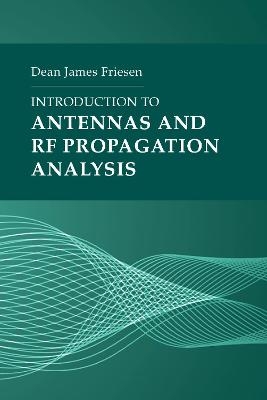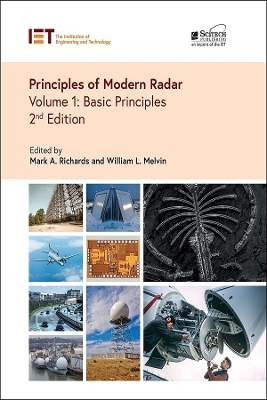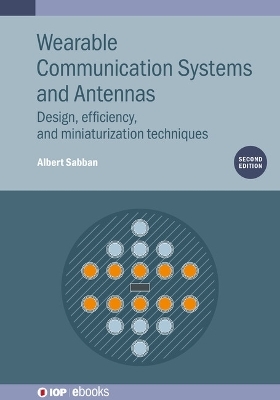
Introduction to Antennas and RF Propagation Analysis
Seiten
2022
|
Unabridged edition
Artech House Publishers (Verlag)
978-1-63081-928-6 (ISBN)
Artech House Publishers (Verlag)
978-1-63081-928-6 (ISBN)
This practical text gives engineers and technicians at all levels an easy-to-follow entry point into the subject of RF/EM wave propagation and antennas. While aimed primarily at those who are entering the field or transitioning from a related field, the book also helps experienced professionals obtain a more refined understanding of the various methodologies and processes in this area.
The book covers the essentials, practices, technical details, and considerations needed to help a team of engineers design, install, and/or predict the technical performance of a new (or even existing) one-way, two-antenna (long radiating distance) RF communication system. The chapters are organized logically to walk you step by step through the application processes, showing you proven methods to bring about top performance, while also helping you factor in unanticipated variances, including those caused by the earth itself, earth's gaseous atmosphere, rain, snow, hail, ice, ionospheric signal attenuation, and EM waves. This kind of understanding and consideration saves time, money, and much frustration in a project.
With this book in hand, you will better understand RF/EM wave propagation and the technical vernacular used to describe it; become familiar with the various processes and considerations in analyzing, designing, and predicting the performance of new and existing antenna RF communications systems; and more confidently approach problem solving and possible solutions for reducing signal interference and loss.
The chapter contents, while not sparing the reader exposure to radiated RF system design and analysis terminology, are written in a relaxed, conversational tone and easy-to-understand manner, making this a perfect learning tool for those entering or transitioning to this field, as well as an excellent supplement or foundational text for an instructional course. The book's logically organized and easy-to-access chapter structure also facilitates its use as a bench reference for quick lookup or review.
The book covers the essentials, practices, technical details, and considerations needed to help a team of engineers design, install, and/or predict the technical performance of a new (or even existing) one-way, two-antenna (long radiating distance) RF communication system. The chapters are organized logically to walk you step by step through the application processes, showing you proven methods to bring about top performance, while also helping you factor in unanticipated variances, including those caused by the earth itself, earth's gaseous atmosphere, rain, snow, hail, ice, ionospheric signal attenuation, and EM waves. This kind of understanding and consideration saves time, money, and much frustration in a project.
With this book in hand, you will better understand RF/EM wave propagation and the technical vernacular used to describe it; become familiar with the various processes and considerations in analyzing, designing, and predicting the performance of new and existing antenna RF communications systems; and more confidently approach problem solving and possible solutions for reducing signal interference and loss.
The chapter contents, while not sparing the reader exposure to radiated RF system design and analysis terminology, are written in a relaxed, conversational tone and easy-to-understand manner, making this a perfect learning tool for those entering or transitioning to this field, as well as an excellent supplement or foundational text for an instructional course. The book's logically organized and easy-to-access chapter structure also facilitates its use as a bench reference for quick lookup or review.
Section I - RF/EM Wave Propagation Fundamentals: Introduction; Characteristics of Electromagnetic Waves; One-Way RF Propagation: The Friis Equation and Free Space Loss; Section II: Additional RF Signal Losses and Causes; Multipath Loss; Fresnel Zone Loss; Antenna Feedline Losses and Antenna Polarization Loss; Other Radiated RF Losses to Consider; Section III - Antennas: Antenna Groupings and Antenna Parameters; Isotropic (Point Source) Antenna; Wire Antennas; Aperture Antennas; Slot Antennas; Horn Antennas; Array Antennas; Reflector Antennas; Yagi-Uda Antennas; Broadband Antennas; Noise and SNR; Receiver Noise, Received Noise, and Signal-to-Noise Ratio; Conclusion.
| Erscheinungsdatum | 04.01.2022 |
|---|---|
| Verlagsort | Norwood |
| Sprache | englisch |
| Themenwelt | Technik ► Nachrichtentechnik |
| ISBN-10 | 1-63081-928-X / 163081928X |
| ISBN-13 | 978-1-63081-928-6 / 9781630819286 |
| Zustand | Neuware |
| Haben Sie eine Frage zum Produkt? |
Mehr entdecken
aus dem Bereich
aus dem Bereich
Basic Principles
Buch | Hardcover (2023)
Institution of Engineering and Technology (Verlag)
149,60 €
Buch | Hardcover (2022)
Institution of Engineering and Technology (Verlag)
179,95 €
Buch | Hardcover (2022)
Institute of Physics Publishing (Verlag)
149,60 €


